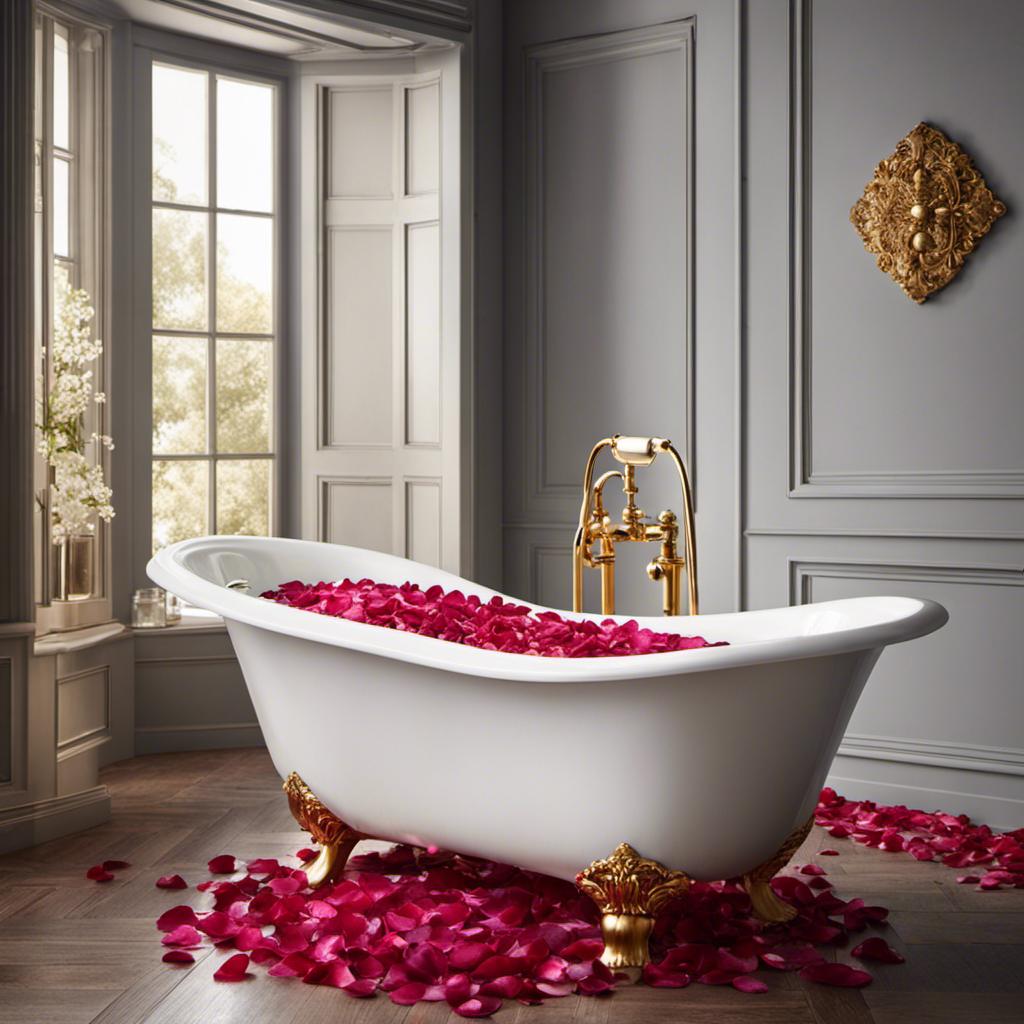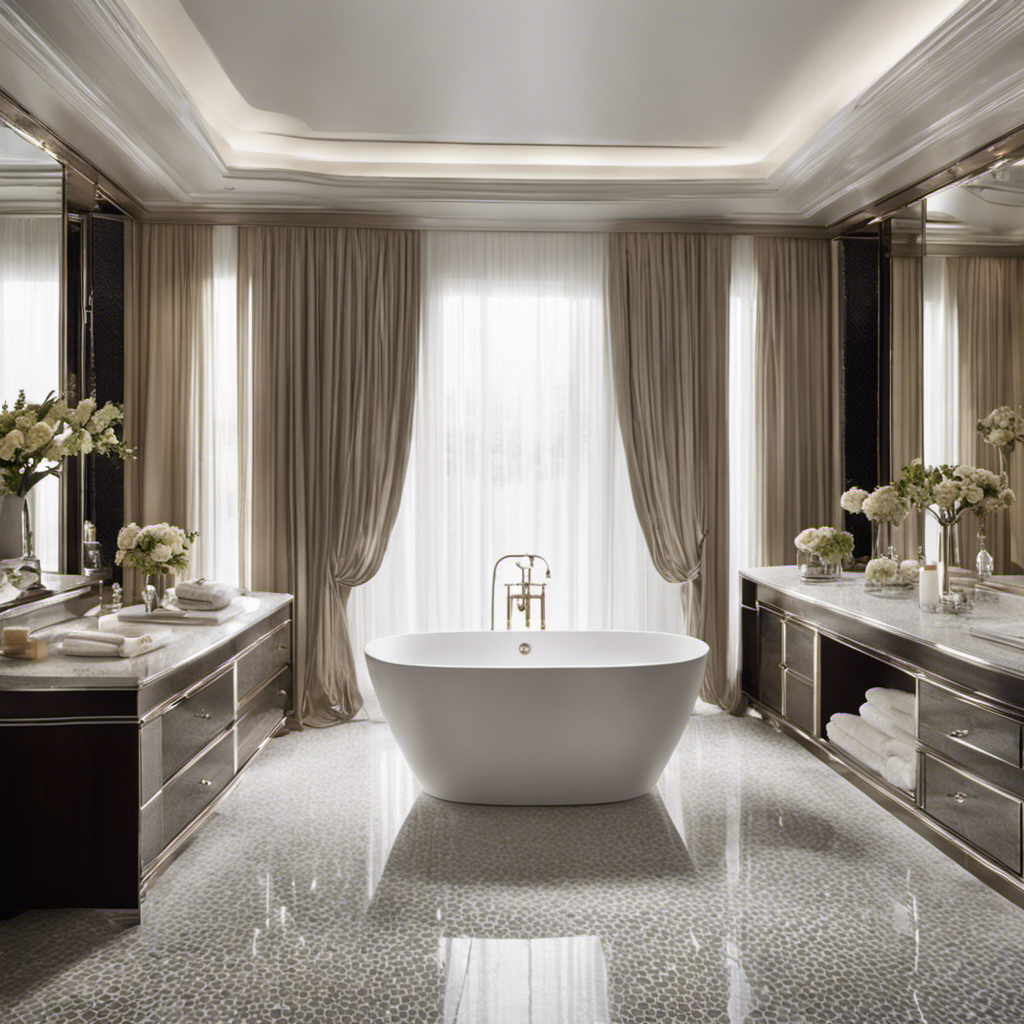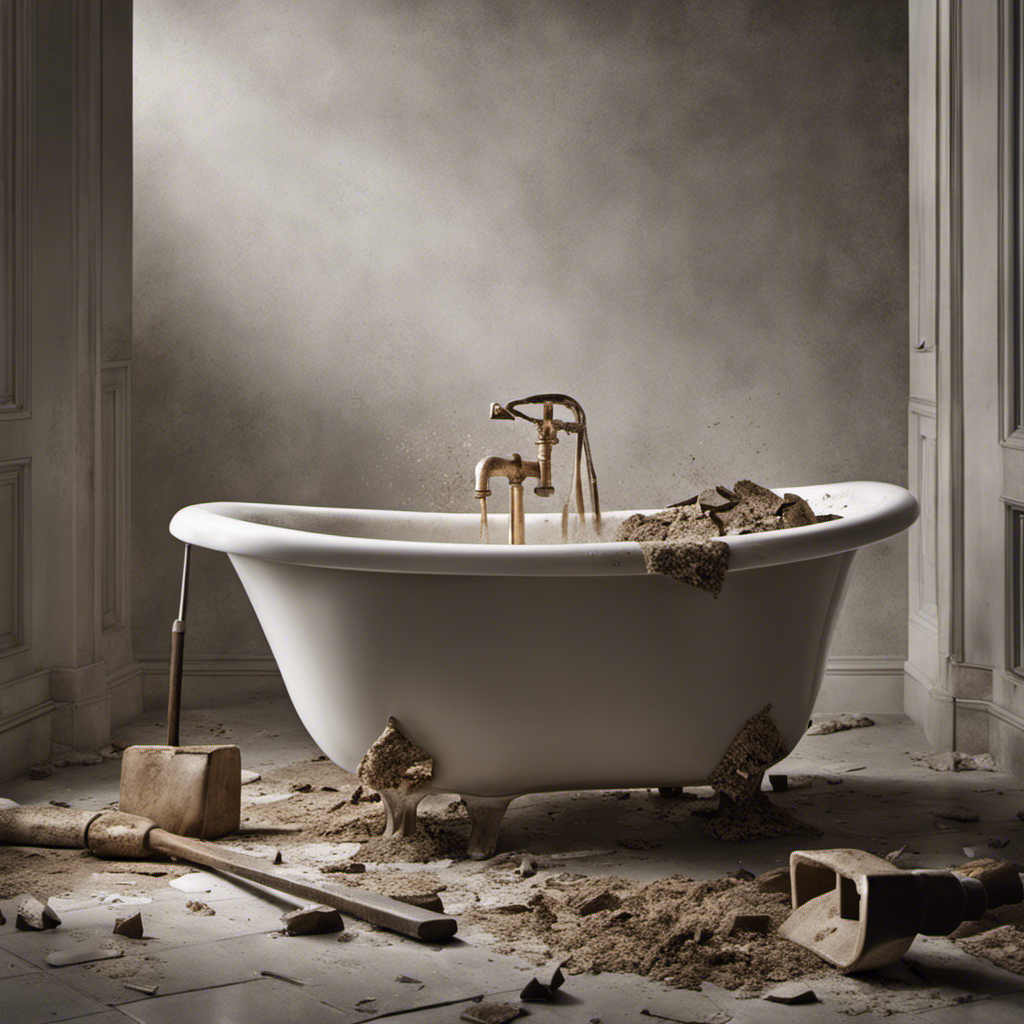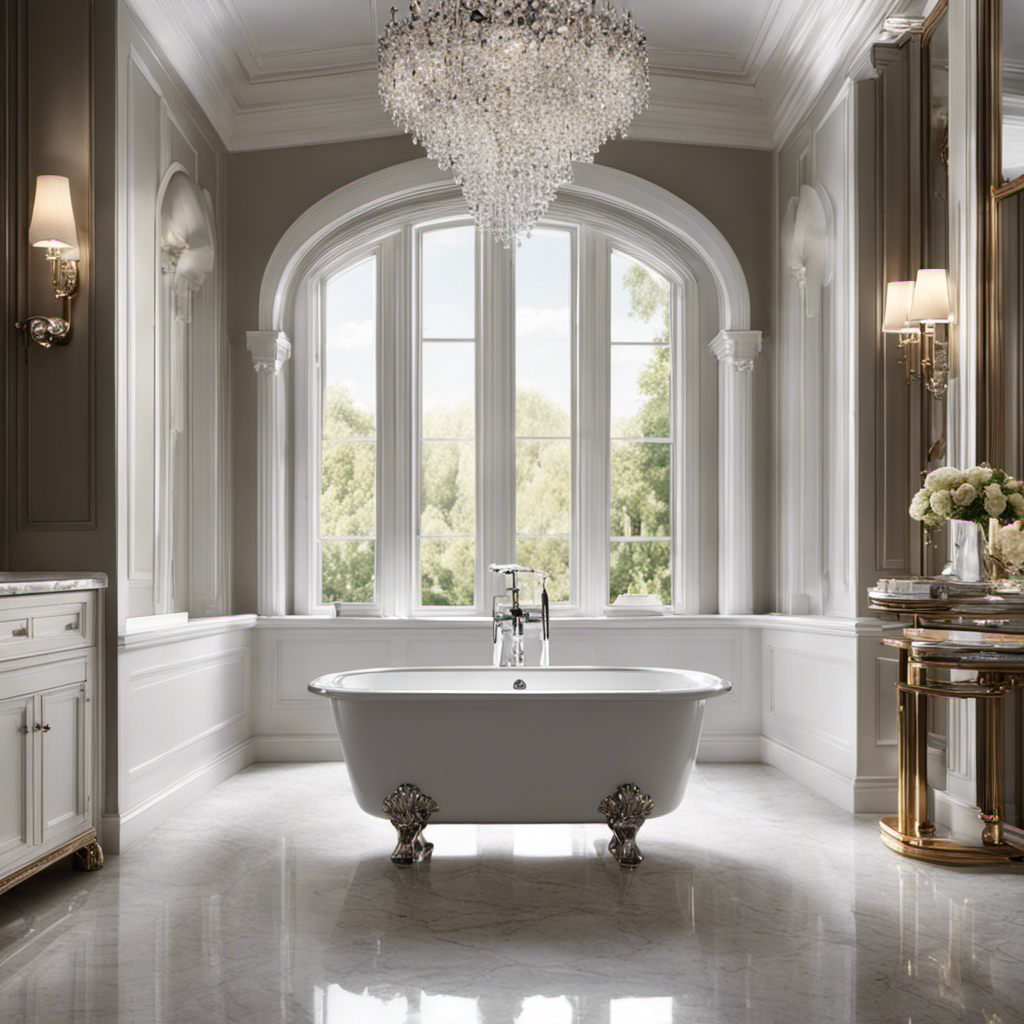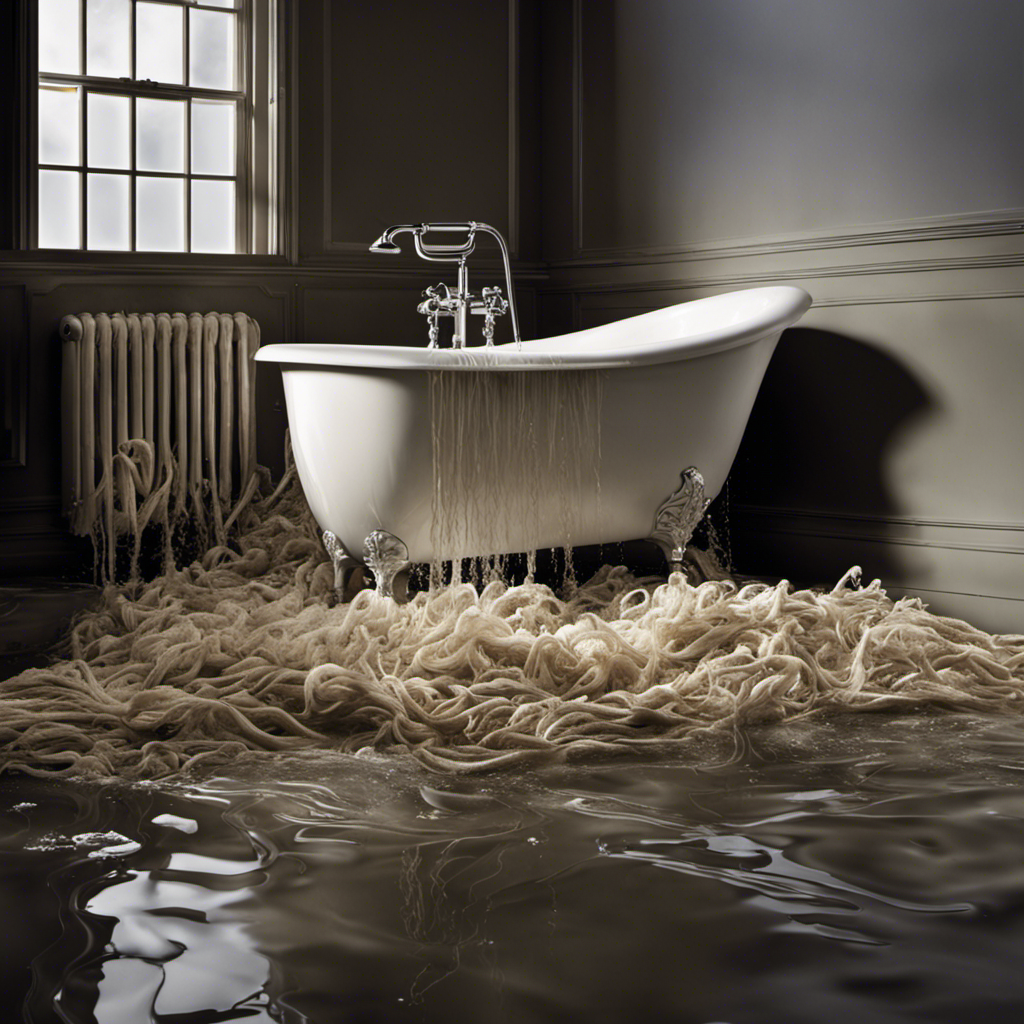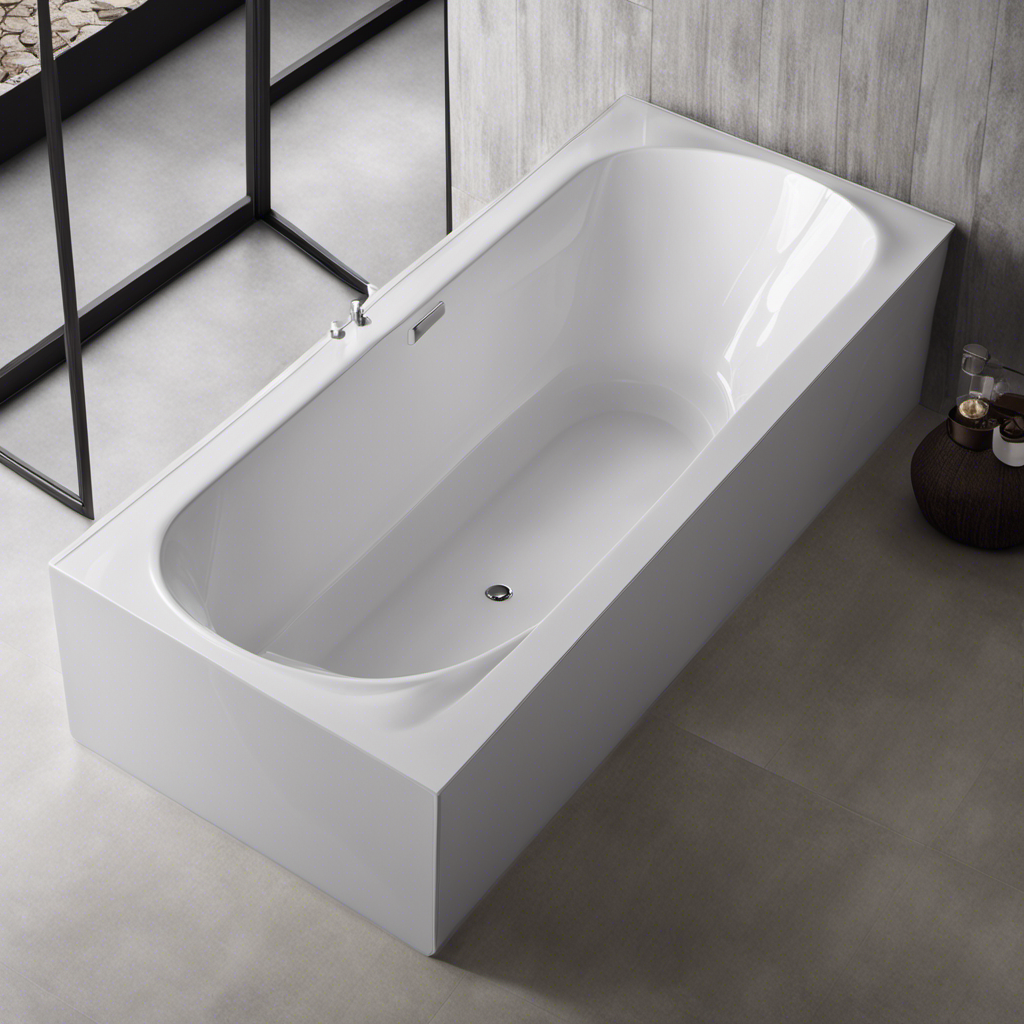Hey there, ever wondered how long it actually takes to fill up a bathtub? Well, I’ve got all the answers for you.
In this article, I’ll be diving into the factors that affect bathtub filling time, the average time it takes to fill a standard tub, and even some tips to speed up the process.
So, if you’re ready for a relaxing soak or just curious about the science behind it all, stick around and let’s get started!
Key Takeaways
- Water temperature and bathtub size are two key factors that affect filling time.
- On average, it takes 10 to 15 minutes to fill a standard bathtub.
- Showers are more efficient than filling a bathtub, as they use less water and are quicker.
- To optimize filling time, consider optimizing water pressure, maintaining the bathtub and faucet, and choosing an efficient faucet with a higher flow rate.
Factors Affecting Bathtub Filling Time
There are several factors that can affect how long it takes for you to fill a bathtub. Two important factors to consider are water temperature and bathtub size.
The temperature of the water plays a significant role in the filling time. Warmer water tends to flow faster, while colder water may take longer to fill the tub.
Additionally, the size of the bathtub also affects the filling time. Larger bathtubs require more water to fill, which can take longer compared to smaller ones.
It’s important to note that other factors, such as water pressure and the efficiency of the faucet, can also impact the filling time.
Average Time to Fill a Standard Bathtub
On average, it typically takes about 10 to 15 minutes to fill a standard bathtub. However, the actual time can vary depending on several factors affecting the filling process.
The first factor is the water pressure in your home. Higher water pressure will result in a faster filling time, while lower pressure will slow it down.
Another factor is the size of the bathtub. Larger tubs will obviously take longer to fill than smaller ones.
Additionally, the flow rate of the faucet or the showerhead you use to fill the tub can affect the filling time.
By considering these factors, you can estimate the time it will take to fill your specific bathtub.
Now, let’s compare this filling time to the time it takes to take a shower.
Time Comparison: Filling a Bathtub Vs. Taking a Shower
If you want to save time, consider taking a shower instead of filling up the bathtub. Not only will you be able to get clean quickly, but you’ll also conserve water in the process. Here are three reasons why taking a shower is a more efficient choice:
-
Showerhead options: Upgrading to a low-flow showerhead can help reduce water usage without sacrificing water pressure. These showerheads use less water per minute and still provide a satisfying shower experience.
-
Water conservation: Showers typically use less water than filling a bathtub. On average, a shower uses about 17 gallons of water, while a bathtub can hold up to 70 gallons. By choosing a shower, you’ll be actively conserving water and helping the environment.
-
Time-saving: Filling a bathtub can take anywhere from 15 to 30 minutes, depending on the water flow rate. On the other hand, a shower can be completed in just a few minutes, allowing you to save time and get on with your day.
Tips for Faster Bathtub Filling
When it comes to filling a bathtub quickly, there are two key factors to consider: water pressure optimization and efficient faucet selection.
By optimizing water pressure, you can ensure that the water flows at an optimal rate, reducing the overall filling time.
Additionally, choosing a faucet that is designed for efficiency can further expedite the process by delivering a higher flow rate.
Water Pressure Optimization
To optimize water pressure, you’ll want to check for any clogs or leaks in the pipes. This is crucial as clogs and leaks can lead to reduced water pressure and increased water consumption.
Here are three important factors to consider when it comes to water pressure optimization:
-
Regular maintenance: By ensuring that your plumbing system is regularly inspected and maintained, you can prevent any potential issues that may affect water pressure. This includes checking for leaks, clearing any clogs, and replacing worn-out pipes or fixtures.
-
Water pressure regulators: Installing a water pressure regulator can help control and stabilize the water pressure in your home. This device ensures that the pressure remains within the recommended range, preventing any excessive strain on your plumbing system.
-
Proper pipe sizing: Ensuring that the pipes in your plumbing system are properly sized can have a significant impact on water pressure. If the pipes are too small, it can result in reduced water flow and pressure. On the other hand, oversized pipes can lead to wasted water and increased consumption.
Efficient Faucet Selection
After optimizing water pressure, another important factor to consider when filling a bathtub efficiently is selecting the right faucet.
There are several faucet options available that can help with water conservation. One option is a low-flow faucet, which restricts the water flow rate to reduce water usage without sacrificing performance. These faucets typically have a flow rate of 1.5 gallons per minute or less, compared to standard faucets that can have a flow rate of 2.5 gallons per minute or more.
Another option is a sensor-activated faucet, which only releases water when it detects motion, preventing wastage when the faucet is not in use.
How Water Pressure Impacts Bathtub Filling Time
When it comes to filling a bathtub, water pressure plays a crucial role in determining the time it takes. Higher water pressure leads to faster filling times, as the force of the water is stronger and allows for a greater volume of water to enter the tub per unit of time.
On the other hand, lower water pressure can significantly slow down the filling process, requiring more time to reach the desired water level.
Water Pressure’s Effect
If you have low water pressure, it may take longer to fill your bathtub. Water pressure regulation plays a crucial role in determining how quickly your bathtub can be filled. Low water pressure can have several negative effects on the filling time, impacting your bathing experience.
Here are three key ways in which low water pressure can affect your bathtub filling time:
- Reduced flow rate: Low water pressure leads to a decreased flow rate, meaning less water is delivered to the bathtub per unit of time.
- Longer wait times: With low water pressure, it will take longer for the bathtub to reach the desired water level, resulting in extended wait times.
- Inefficient use of water: Low water pressure can cause the water to trickle out, leading to wastage and inefficient use of water resources.
Overall, low water pressure can significantly impact the time it takes to fill a bathtub, causing inconvenience and frustration.
Faster With Higher Pressure
After learning about the effect of water pressure on filling a bathtub, I decided to explore the benefits of higher water pressure and the installation of a pressure regulator.
Higher water pressure can significantly reduce the time it takes to fill a bathtub. With increased pressure, the water flows out of the faucet at a faster rate, allowing the tub to fill up more quickly. This is particularly advantageous for individuals who are always on the go and need to save time.
To regulate the water pressure and prevent it from becoming too high, a pressure regulator can be installed. This device helps maintain a consistent and safe water pressure throughout the plumbing system, preventing damage to pipes and fixtures.
Installing a pressure regulator is a straightforward process that can improve water efficiency and prolong the lifespan of your plumbing system.
Extending Bathtub Filling Time for a Relaxing Soak
To create a more relaxing soak, consider extending the time it takes to fill the bathtub. By slowing down the filling process, you allow yourself more time to unwind and fully immerse in the soothing experience.
Here are three relaxation techniques to enhance your bath time:
-
Add bath salts or essential oils: These aromatic additions can help to calm your mind and relax your muscles, creating a more tranquil atmosphere.
-
Use candles or dim lighting: Soft, flickering light can create a peaceful ambiance and help to relieve stress and tension.
-
Play calming music: Gentle melodies or nature sounds can create a serene environment and enhance your relaxation.
Conclusion
In conclusion, the time it takes to fill a bathtub can vary depending on several factors. These factors include water pressure, tub size, and personal preference for water temperature. On average, it takes about 10-15 minutes to fill a standard bathtub.
However, one interesting statistic to note is that taking a shower uses significantly less water than filling a bathtub. In fact, a 10-minute shower typically uses around 25 gallons of water, while filling a bathtub can use up to 70 gallons.
This statistic may evoke an emotional response, highlighting the importance of water conservation and making conscious choices in our daily routines.
